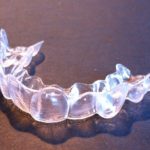
Demand for orthodontic treatment continues to rise particularly in adults and the use of clear aligner therapy has become an aesthetic alternative approach to traditional fixed appliance therapy.
The aim of this review was to assess the predictability of clear aligners and treatment outcomes of clear aligner therapy compared with fixed appliance therapy.
Methods
Searches were conducted in the Medline, Embase, Web of Science and LILACS databases from Jan 2014 to April 2019 with no language restrictions. Studies evaluating the predictability of types of tooth movement with clear aligners, or if aligner treatment outcome was compared to fixed appliance therapy were considered. Studies recruiting patients before 2013 or have not used the latest iteration of aligners were excluded.
Three reviewers independently selected studies and extracted data. Risk of bias was assessed using the Risk Of Bias In Non‐randomized Studies-of Interventions (ROBINS‐I) for observational studies and Cochrane Risk of Bias tool for randomised controlled trials (RCTs). The grading of recommendation, assessment, development and evaluation (GRADE) instrument was used to assess the certainty of the evidence. A narrative summary of the findings was presented.
Results
- 7 studies (1 RCT and 6 retrospective cohort studies) involving a total of 254 patients were included.
- Sample sizes ranged from 16-75 patients.
- Except for 1 study involving first premolar extractions all studies evaluated mild-moderate malocclusions.
- 5 studies used the Invisalign® system, 2 used Nuvola® system and F22 aligners.
- 1 study was considered to have a high risk of bias and 6 a moderate risk.
- 5 studies assessed predictability of tooth movement comparing post-treatment patient models to the predicted digital planned tooth movement models
- 2 studies compared aligner therapy outcome to fixed appliance treatment outcome by using lateral cephalograms.
Conclusions
The authors concluded: –
Current evidence with low to moderate level of certainty exists in regard to efficiency of clear aligner therapy for certain tooth movements. The whole array of possible malocclusion types to be efficiently treated with clear aligners has not been covered by the included studies.
Most of the tooth movements may not be predictable enough with clear aligner therapy except for minor horizontal teeth movement (moderate level of evidence).
Predictability of minor extrusion of anterior teeth (very low level of evidence) has been increased as compared to previous SRs conclusions.
Clear aligners may produce clinically acceptable outcomes com- parable to fixed appliance therapy for minor buccolingual inclination of upper and lower incisors (low level of evidence). Treatment time required to achieve similar results (compared to fixed appliances) has not been investigated yet.
Additional refinements are likely needed in almost every case to overcome current clear aligner therapy limited predictability.
Comments
Earlier this year we looked at another review by Yunyan et al comparing clear aligner therapy with fixed appliance therapy (Dental Elf – 28th Jan 2019). That review used a similar range of databases but had no date restrictions including papers up to August 2018. This new review has a restricted time period of Jan 2014 to April 2019. The Yunan review included 2 RCTs, 1 prospective and 5 retrospective cohort studies the new review includes 1 RCT and 6 retrospective cohort studies with only 1 study being common to both reviews.
While this review has used a good methodological approach, it has used a narrow date window from which to select studies. While this was done in order to identify studies only involving the latest iteration of clear aligners what is clear from both this and previous reviews is the limited quantity and quality of studies available from which to assess the effectiveness of clear aligners in comparison with fixed appliances. Well conducted and reported studies of appropriate size are needed to clarify the evidence in relation to clear aligners.
For an orthodontist’s perspective on this review see Kevin O’Briens blog.
Links
Primary Paper
Robertson L, Kaur H, Fagundes NCF, Romanyk D, Major P, Flores Mir C. Effectiveness of clear aligner therapy for orthodontic treatment: A systematic review [published online ahead of print, 2019 Oct 25]. Orthod Craniofac Res. 2019;10.1111/ocr.12353. doi:10.1111/ocr.12353
Other references
Dental Elf – 28th Jan 2019
Kevin O’Brien’s Blog – Is clear aligner therapy effective?
Dental Elf – Clear aligner blogs
Picture Credits
By Smikey Io – Own work, CC BY-SA 3.0,

When you are dealing with treatments like aligners, it is better to keep them clean. No matter whether it is about braces, invisalign or aligners, hygiene should be given importance. The improvement in your condition very much depends upon hygiene. Thank you very much. Keep sharing this more and more!
Crowns La Grange